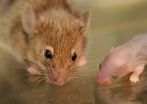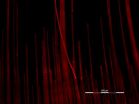(Press-News.org) The most consistent finding of autism research lies in the revelation that the disorders are incredibly complex. Two new studies in the January 23 issue of the Cell Press journal Neuron that add to the growing appreciation of this complexity focus on identifying inherited genetic mutations linked with autism spectrum disorders. The mutations—which are distinct from the spontaneous mutations that have been the focus of previous studies—may provide valuable insights into the causes of autism.
"It's long been known that autism is a heritable condition and that some cases appear to run in families. Our studies are among the first to begin to address this heritable component," says Dr. Christopher Walsh of Boston Children's Hospital, who is the senior author of one of the papers.
Both groups sequenced the portion of the genome that codes for proteins, also known as the exome, in individuals with autism, their relatives, and controls. In one study, investigators focused on rare mutations that completely abolish the function of particular genes—and therefore the expression of a protein. "We utilized new genome-sequencing technologies to discover a component of autism that can be traced to recessive inheritance—that is, when a child inherits two broken copies of the same gene, one from each parent who is a carrier," explains senior author Dr. Mark Daly of Massachusetts General Hospital and the Broad Institute. "There were twice as many autism cases as control individuals that were apparently missing an important protein somewhere in the genome," he adds. Their findings suggest that 5% of autism risk is linked to inherited mutations that completely disrupt the functions of genes.
Like Dr. Daly and his colleagues, Dr. Walsh and his team identified and characterized cases of autism due to the inheritance of two gene mutations, one from each parent. In this work, though, the researchers found that the partial loss of a gene's function—not only complete absence of function—is linked to autism spectrum disorders. They identified several genes—such as those involved in neurometabolic pathways—that were not previously associated with autism risk, and they revealed a striking variability of autism severity despite inheritance of similar genetic mutations.
"These two studies firmly establish that recessive mutations contribute importantly to autism, not just in specialized populations but in the population at large," says first author Dr. Timothy Yu, of Boston Children's Hospital.
With follow-up work, identifying the various genes that are silent or partially disabled in autism cases can provide key clues to understanding the underlying biology of autism spectrum disorders and potentially help generate new therapies.
###
Neuron, Yu et al.: "Using whole exome sequencing to identify inherited causes of autism."
Neuron, Lim et al.: "Rare complete knockouts in humans: population distribution and significant role in autism spectrum disorders." END
Studies provide insights into inherited causes of autism
2013-01-23
ELSE PRESS RELEASES FROM THIS DATE:
New brain circuit sheds light on development of voluntary movements
2013-01-23
DURHAM, N.C. – All parents know the infant milestones: turning over, learning to crawl, standing, and taking that first unassisted step. Achieving each accomplishment presumably requires the formation of new connections among subsets of the billions of nerve cells in the infant's brain. But how, when and where those connections form has been a mystery.
Now researchers at Duke Medicine have begun to find answers. In a study reported Jan. 23, 2013, in the scientific journal Neuron, the research team describes the entire network of brain cells that are connected to specific ...
Whole-exome sequencing identifies inherited mutations in autism
2013-01-23
Boston, Mass. - While autism clearly runs in some families, few inherited genetic causes have been found. A major reason is that these causes are so varied that it's hard to find enough people with a given mutation to establish a clear pattern. Researchers at Boston Children's Hospital have pinpointed several inherited mutations—among the first to be identified—through an unusual approach: using whole-exome sequencing to study large Middle Eastern families with autism.
The study, published in the January 23 issue of the journal Neuron, also found evidence for some of ...
Setting the dark on fire
2013-01-23
In space, dense clouds of cosmic gas and dust are the birthplaces of new stars. In visible light, this dust is dark and obscuring, hiding the stars behind it. So much so that, when astronomer William Herschel observed one such cloud in the constellation of Scorpius in 1774, he thought it was a region empty of stars and is said to have exclaimed, "Truly there is a hole in the sky here!" [1]
In order to better understand star formation, astronomers need telescopes that can observe at longer wavelengths, such as the submillimetre range, in which the dark dust grains shine ...
Researchers design a new imaging technique for identifying the age and sex of a corpse
2013-01-23
Researchers at the University of Granada, Spain, have designed a new computing system that determines the age and sex of a corpse with a reliability of 95%. This system is based on free software called Image and a free DICOM displayer called K-Pacs. This state-of-the-art system is very different from the traditional macroscopy systems used to evaluate the osteoarticular features of a corpse, and it is much faster and user-friendly.
The author of this study is Manuel López Alcaraz, a researcher at the Forensic Anthropology Laboratory of the University of Granada, in collaboration ...
Astrocytes identified as target for new depression therapy
2013-01-23
BOSTON (January 23, 2013) — Neuroscience researchers from Tufts University have found that our star-shaped brain cells, called astrocytes, may be responsible for the rapid improvement in mood in depressed patients after acute sleep deprivation. This in vivo study, published in the current issue of Translational Psychiatry, identified how astrocytes regulate a neurotransmitter involved in sleep. The researchers report that the findings may help lead to the development of effective and fast-acting drugs to treat depression, particularly in psychiatric emergencies.
Drugs ...
Type 1 diabetes in urban children skyrockets, increasing by 70 percent in children under age 5
2013-01-23
Over the past two decades, the incidence of type 1 diabetes in very young children under age 5 has increased by 70 percent in the city of Philadelphia, according to research from a University of Pennsylvania School of Nursing researcher who currently maintains the only US registry of diabetes in children that has collected data continuously since 1985.
In a far-reaching study in the current issue of Diabetes Care, researchers led by nursing professor Terri H. Lipman, PhD, RN found that the overall incidence of Type 1 diabetes in children in Philadelphia has increased ...
Forcing choice may hamper decision-making, study finds
2013-01-23
Constraining choice isn't necessarily a good thing when it comes to managers' problem-solving, according to a new Canadian study.
Managers tend to pick higher-risk options when forced to choose between competing alternatives to complex situations, according to researchers from the University of Guelph and University of Waterloo whose study was published recently in the Journal of Business Ethics.
But when they're not forced to choose, managers tend to reflect more and solve problems with fewer negative consequences, says the study.
"One of the most powerful tools ...
NIH-developed candidate dengue vaccine shows promise in early-stage trial
2013-01-23
A candidate dengue vaccine developed by scientists at the National Institutes of Health (NIH) has been found to be safe and to stimulate a strong immune response in most vaccine recipients, according to results from an early-stage clinical trial sponsored by the National Institute of Allergy and Infectious Diseases (NIAID), part of the NIH. The trial results were published online on January 17 in the Journal of Infectious Diseases.
Dengue fever, prevalent in many tropical and subtropical regions of the world, is caused by any of four related viruses—DENV-1, DENV-2, DENV-3 ...
Self-assembling silica microwires may herald new generation of integrated optical devices
2013-01-23
WASHINGTON, Jan. 23, 2013—Silica microwires are the tiny and as-yet underutilized cousins of optical fibers. If precisely manufactured, however, these hair-like slivers of silica could enable applications and technology not currently possible with comparatively bulky optical fiber. By carefully controlling the shape of water droplets with an ultraviolet laser, a team of researchers from Australia and France has found a way to coax silica nanoparticles to self-assemble into much more highly uniform silica wires.
The international team describes their novel manufacturing ...
Parents numb to misuse of narcotic pain meds by youth, new poll shows
2013-01-23
ANN ARBOR, Mich. – Despite data on rising rates of abuse and overdoses of narcotic pain medicines across all age groups, in a new poll from the University of Michigan, most parents said they are not very concerned about misuse of these medicines by children and teens. .
In addition, parent support was lukewarm for policies that would discourage abuse of drugs like Vicodin or Oxycontin, according to the most recent University of Michigan Mott Children's Hospital National Poll on Children's Health.
Overall, 35% of parents said they are very concerned about misuse of ...


